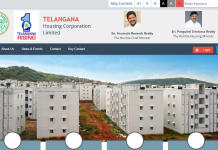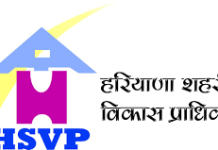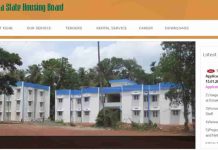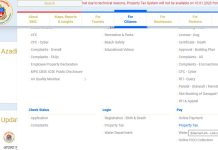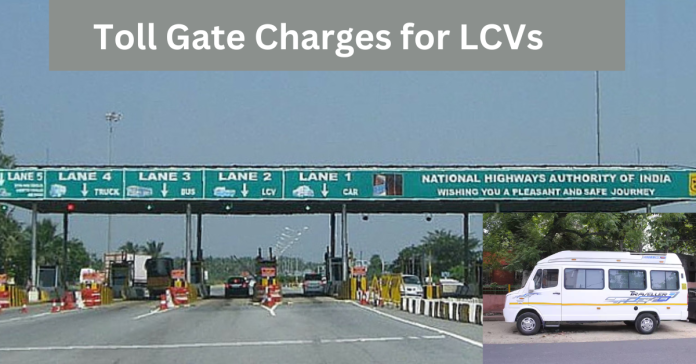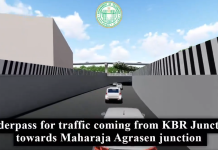Light Commercial Vehicles (LCVs) and Mini Buses
Exit | Kokapet | Neopolis | Edula | Patancheru | Sultanpur | Mallampet | Dindigal/Saragudem | Medchal | Shamirpet | Keesara |
| Ghatkesar | Taramptipet | Pedda | Bonguluru | Raviryal | Tukkuguda | Pedda | Shamshabad | Rajendra | TSPA | Narsingi | Nanakramguda |
Kokapet | 0 | 10 | 40 | 70 | 110 | 130 | 150 | 180 | 220 | 260 |
| 270 | 240 | 220 | 170 | 140 | 120 | 90 | 70 | 40 | 30 | 10 | 30 |
Neopolis | 10 | 0 | 40 | 70 | 100 | 120 | 140 | 180 | 210 | 250 |
| 280 | 250 | 220 | 180 | 150 | 130 | 100 | 80 | 50 | 40 | 20 | 30 |
Edula Nagulapally | 40 | 40 | 0 | 30 | 60 | 80 | 110 | 140 | 170 | 220 |
| 250 | 280 | 260 | 210 | 190 | 170 | 140 | 110 | 80 | 70 | 60 | 70 |
Patancheru | 70 | 70 | 30 | 0 | 30 | 50 | 70 | 110 | 140 | 180 |
| 220 | 250 | 270 | 250 | 220 | 200 | 170 | 150 | 120 | 100 | 90 | 100 |
Sultanpur | 110 | 100 | 60 | 30 | 0 | 20 | 40 | 80 | 110 | 150 |
| 180 | 210 | 240 | 280 | 250 | 230 | 200 | 180 | 150 | 130 | 120 | 130 |
Mallampet | 130 | 120 | 80 | 50 | 20 | 0 | 20 | 60 | 90 | 130 |
| 160 | 190 | 220 | 260 | 270 | 250 | 220 | 200 | 170 | 160 | 140 | 150 |
Dindigal/Saragudem | 150 | 140 | 110 | 70 | 40 | 20 | 0 | 30 | 70 | 110 |
| 140 | 170 | 200 | 240 | 270 | 270 | 240 | 220 | 190 | 180 | 160 | 180 |
Medchal | 180 | 180 | 140 | 110 | 80 | 60 | 30 | 0 | 30 | 80 |
| 110 | 140 | 160 | 210 | 230 | 250 | 280 | 250 | 220 | 210 | 200 | 210 |
Shamirpet | 220 | 210 | 170 | 140 | 110 | 90 | 70 | 30 | 0 | 40 |
| 70 | 100 | 130 | 170 | 200 | 220 | 250 | 270 | 260 | 240 | 230 | 240 |
Keesara | 260 | 250 | 220 | 180 | 150 | 130 | 110 | 80 | 40 | 0 |
| 30 | 60 | 90 | 130 | 160 | 180 | 210 | 230 | 260 | 270 | 270 | 290 |
Ghatkesar | 270 | 280 | 250 | 220 | 180 | 160 | 140 | 110 | 70 | 30 |
| 0 | 30 | 60 | 100 | 130 | 150 | 180 | 200 | 230 | 240 | 260 | 280 |
Taramptipet | 240 | 250 | 280 | 250 | 210 | 190 | 170 | 140 | 100 | 60 |
| 30 | 0 | 30 | 70 | 100 | 120 | 150 | 170 | 200 | 210 | 230 | 250 |
Pedda Amberpet | 220 | 220 | 260 | 270 | 240 | 220 | 200 | 160 | 130 | 90 |
| 60 | 30 | 0 | 40 | 70 | 90 | 120 | 140 | 170 | 190 | 200 | 220 |
Bonguluru | 170 | 180 | 210 | 250 | 280 | 260 | 240 | 210 | 170 | 130 |
| 100 | 70 | 40 | 0 | 30 | 50 | 80 | 100 | 130 | 140 | 160 | 180 |
Raviryal | 140 | 150 | 190 | 220 | 250 | 270 | 270 | 230 | 200 | 160 |
| 130 | 100 | 70 | 30 | 0 | 20 | 50 | 70 | 100 | 120 | 130 | 150 |
Tukkuguda | 120 | 130 | 170 | 200 | 230 | 250 | 270 | 250 | 220 | 180 |
| 150 | 120 | 90 | 50 | 20 | 0 | 30 | 50 | 80 | 100 | 110 | 130 |
Pedda Golconda | 90 | 100 | 140 | 170 | 200 | 220 | 240 | 280 | 250 | 210 |
| 180 | 150 | 120 | 80 | 50 | 30 | 0 | 20 | 50 | 70 | 80 | 100 |
Shamshabad | 70 | 80 | 110 | 150 | 180 | 200 | 220 | 250 | 270 | 230 |
| 200 | 170 | 140 | 100 | 70 | 50 | 20 | 0 | 30 | 40 | 60 | 80 |
Rajendra Nagar | 40 | 50 | 80 | 120 | 150 | 170 | 190 | 220 | 260 | 260 |
| 230 | 200 | 170 | 130 | 100 | 80 | 50 | 30 | 0 | 10 | 30 | 50 |
TSPA | 30 | 40 | 70 | 100 | 130 | 160 | 180 | 210 | 240 | 270 |
| 240 | 210 | 190 | 140 | 120 | 100 | 70 | 40 | 10 | 0 | 20 | 40 |
Narsingi | 10 | 20 | 60 | 90 | 120 | 140 | 160 | 200 | 230 | 270 |
| 260 | 230 | 200 | 160 | 130 | 110 | 80 | 60 | 30 | 20 | 0 | 20 |
Nanakramguda | 30 | 30 | 70 | 100 | 130 | 150 | 180 | 210 | 240 | 290 |
| 280 | 250 | 220 | 180 | 150 | 130 | 100 | 80 | 50 | 40 | 20 | 0 |
Precautions for a Safe Journey on Hyderabad’s Outer Ring Road (ORR) for Light Commercial Vehicles (LCVs) and Mini Buses
Traveling on Hyderabad’s Outer Ring Road (ORR) can be a smooth and efficient experience, especially if you are driving light commercial vehicles (LCVs) or minibusses. To ensure a safe journey, here are some important precautions to
consider:
1. Pre-Trip Vehicle Inspection
- Check Engine and Fluids:
Ensure that the engine oil, coolant, brake fluid, and other essential
fluids are at appropriate levels. - Tire Condition: Inspect
tires for proper inflation, tread wear, and any visible damage. - Brakes and Lights: Verify
that the brakes are functioning correctly and that all lights, including
indicators and brake lights are operational. - Emergency Equipment: Carry
essential emergency equipment like a first-aid kit, fire extinguisher,
spare tire, and basic tools.
2. Understanding Toll Rates
- Toll Fees: Be aware of the
toll rates for LCVs and minibusses. Ensure you have sufficient funds or an
active FASTag for hassle-free toll payments. - Exit Points: Familiarize
yourself with the exits and interchanges to plan your route effectively.
3. Driver Preparedness
- Rest and Alertness: Ensure
the driver is well-rested before starting the journey. Fatigue can impair
reaction time and judgment. - Legal Documents: Carryall
necessary documents, including the driver’s license, vehicle registration,
insurance papers, and pollution under control (PUC) certificate.
4. Safety Measures
- Seat Belts: Ensure all
passengers and the driver wear seat belts. - Speed Limits: Adhere to
the posted speed limits, keeping in mind that LCVs and mini-buses may have
different speed regulations than smaller vehicles. - Safe Distance: Maintain a
safe distance from other vehicles to allow for adequate stopping distance.
5. Load Management
- Proper Loading: Ensure the
vehicle is not overloaded. Distribute the weight evenly to maintain
balance and stability. - Secure Cargo: Secure all
cargo properly to prevent shifting or falling during the drive.
6. Driving Etiquette
- Lane Discipline: Stick to
designated lanes for heavy vehicles and avoid frequent lane changes. - Use of Indicators: Always
use indicators when changing lanes or making turns. - Overtaking: Overtake only
when it is safe and legal to do so. Use the appropriate lanes and signals.
7. Navigation and Technology
- GPS Navigation: Use a
reliable GPS navigation system to stay updated on your route and any
traffic conditions. - Communication Devices:
Keep a mobile phone or two-way radio handy for communication, but avoid
using them while driving.
8. Emergency Preparedness
- Breakdown Assistance: Have
contact information for roadside assistance services in case of a vehicle
breakdown. - Emergency Contacts: Keep a
list of emergency contact numbers, including local police, ambulance
services, and the nearest service station.
9. Environmental and Weather Conditions
- Weather Check: Check the
weather forecast before your trip. Avoid traveling during severe weather
conditions if possible. - Road Conditions: Be aware
of the road conditions and any ongoing construction that may affect your
journey.
10. Rest and Refreshment Stops
- Scheduled Breaks: Plan for regular breaks to avoid driver fatigue. Use designated rest areas for
these stops. - Food and Water: Carry sufficient food and water, especially for long journeys, to keep the
driver and passengers hydrated and nourished.
11. Safety Drills and Awareness
- Fire Drills: Conduct
safety drills for fire emergencies, especially if you are transporting passengers. - Evacuation Plans: Have a clear evacuation plan in case of emergencies and ensure all passengers are
aware of it.
Conclusion
Traveling on Hyderabad’s ORR in LCVs and minibusses can be efficient and safe if the above precautions are taken. Proper vehicle maintenance, adherence to safety measures, and preparedness for emergencies are key to a smooth journey. Always prioritize safety over speed and ensure compliance with all traffic regulations to make your travel experience on the ORR both pleasant and secure.
Latest Blogs






